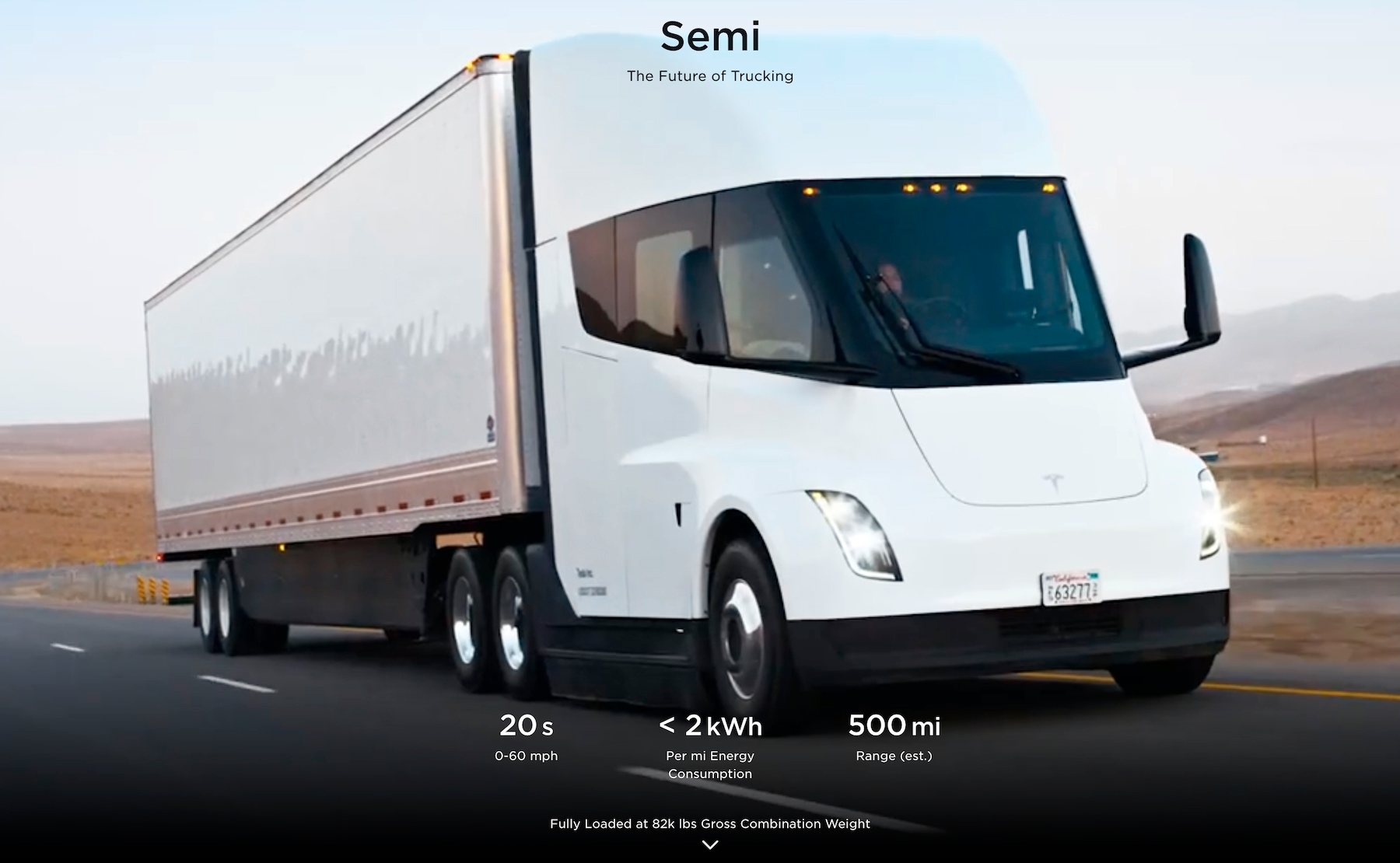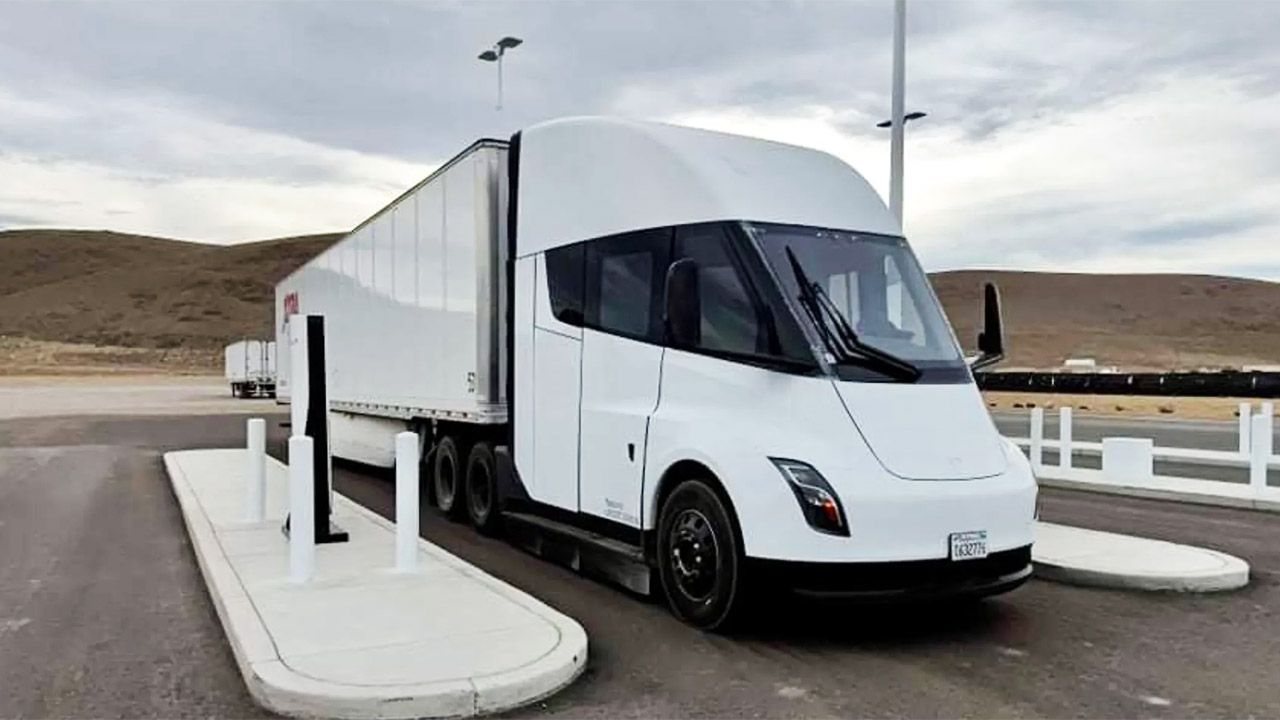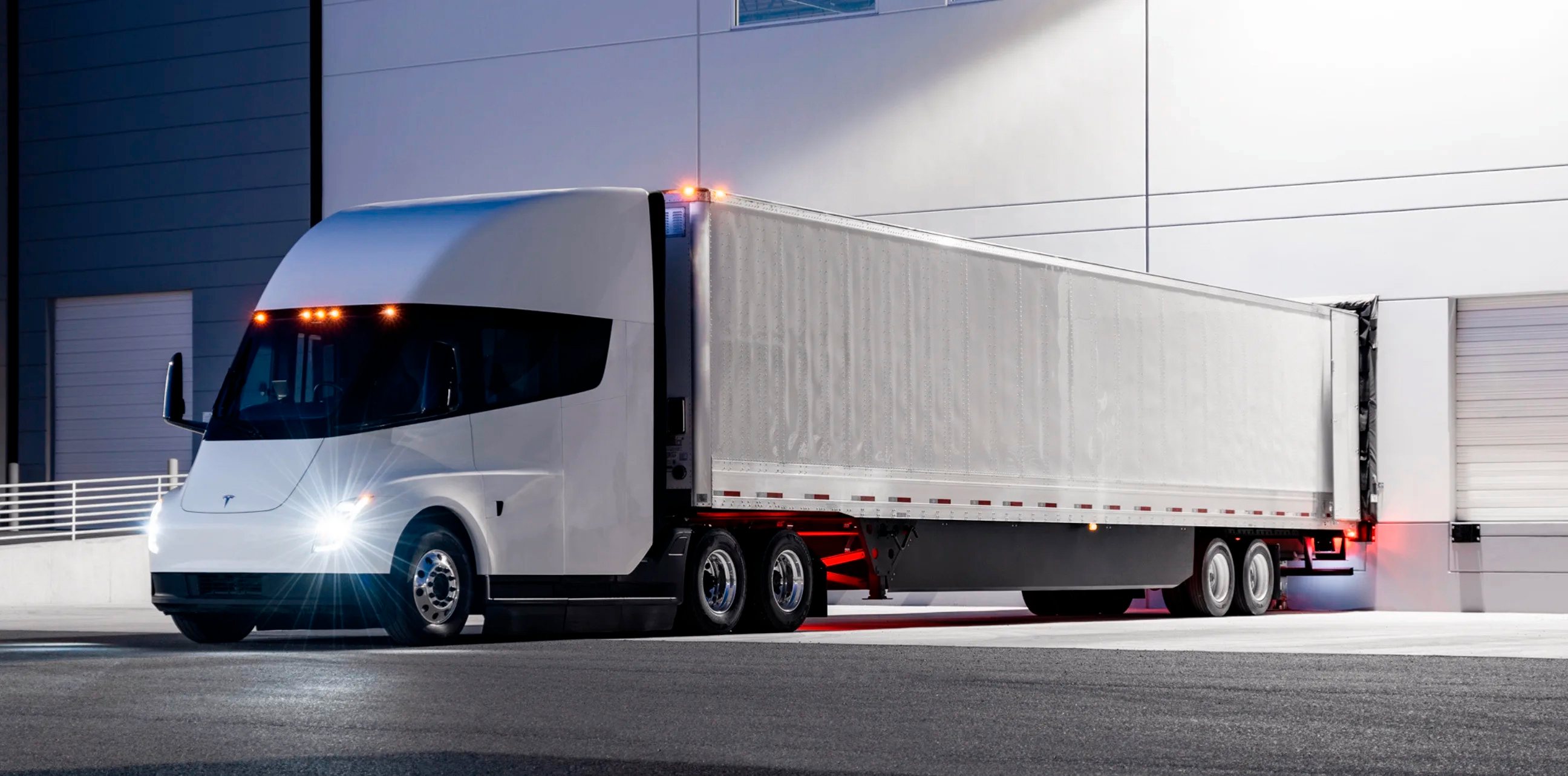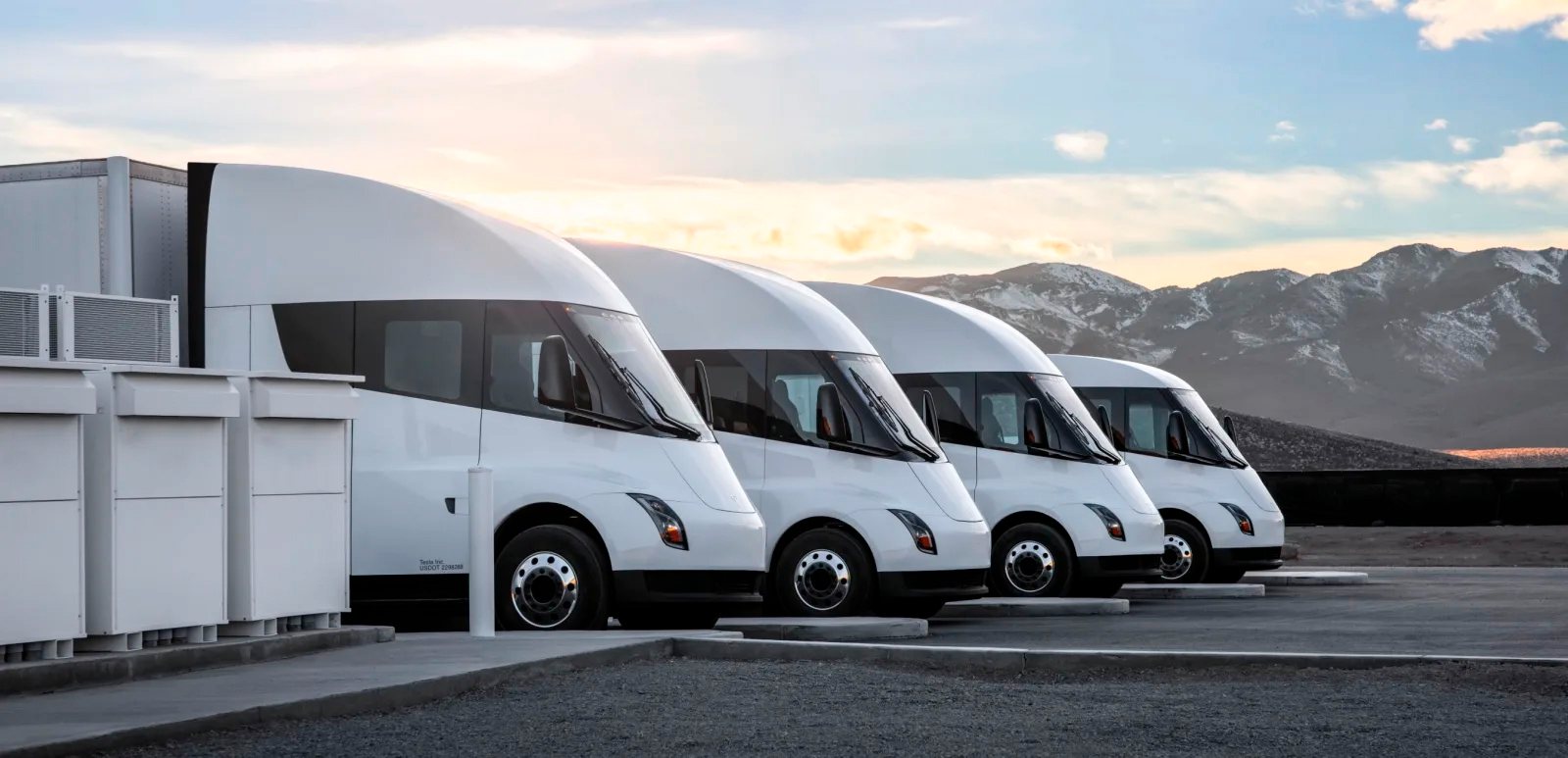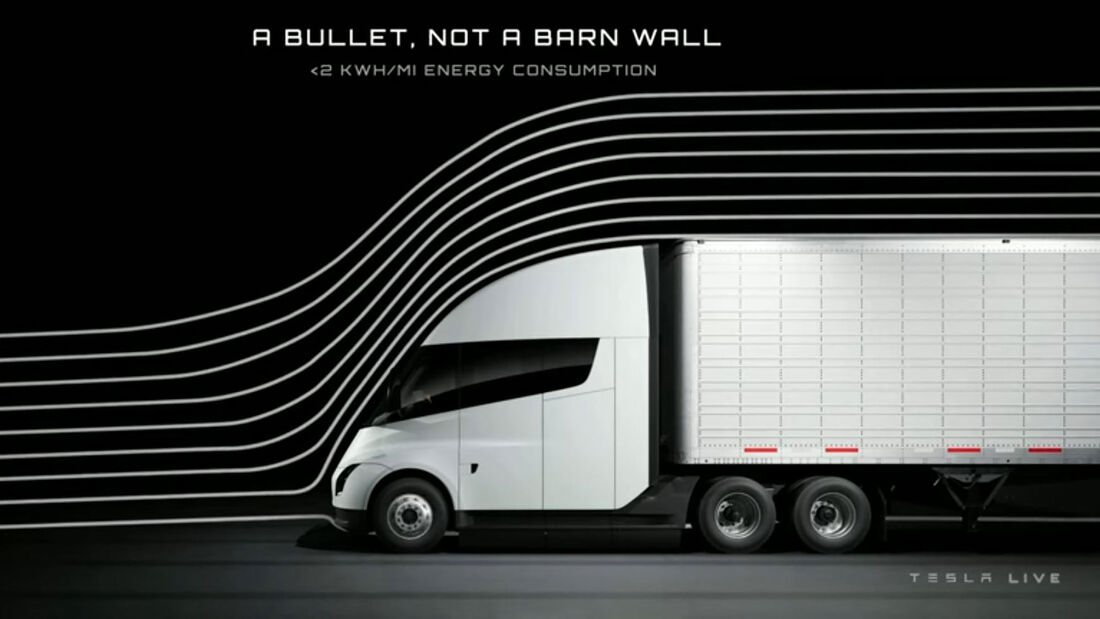
Tesla kicked off December 1 with deliveries to customers of its new Semi, the electric tractor for semi-trailers capable of moving a US gross weight of 37,194 kg (82,000 pounds, plus 2,000 pounds, about 907 kg, that the competitors with diesel engines). As happened with the launch of the Model 3, Tesla reaches the market with the Semi full of triumphs, from the autonomy of 805 km to the possibility of charging at 1MW, that is, 1000 kW, going through a brutal acceleration capacity and announced savings of $74,000/year compared to a similar diesel truck.
Introduced five years ago, the Tesla Semi is the 5th model from the North American electric vehicle manufacturer to hit the market, produced exclusively at the Gigafactory in Texas, where the Model Y and Model 3 are already out, which will soon be added to the cybernetic truck. Unlike the automotive business, where style, brand image, acceleration and top speed are often overvalued in relation to price and running costs, primarily fuel consumption, in haulage trucks the approach is different. . In these work vehicles, almost always driven by professionals who are not their owners, what matters most in the decision is profitability, that is, the price/consumption binomial, as long as the cargo capacity is as desired and the time lost in refueling or recharging is not an impediment.
3 times the power of any diesel truck on the road, with the efficiency to go 500 miles pic.twitter.com/0BghOBr9M6
—Tesla (@Tesla) December 2, 2022
Sold for between $150,000 for the base version, $180,000 for the Long Range and $200,000 for the Founders Series, the first unit of the Semi was delivered to the first customer who confirmed the order. None other than the reputable Pepsi Co, which will receive the first 15 units, decorated by the brands Pepsi and Frito Lay. The first units to hit the road are the most expensive and best equipped, also having the largest capacity battery and allowing you to aspire to the most generous autonomy. They also mount the most powerful mechanicsa system similar to the Model S Plaid, with three motors that share power between the two rear axles of the tractor, which have different functions when it comes to moving the heavy battery-powered vehicle forward.
Giant battery that recharges at 1000 kW
Unlike other electric truck manufacturers, Tesla will produce and operate a network of charging stations for the Semi, the V4 Superchargers. This without asking for help from different states (in the case of the US) or countries (Europe), but only to make their battery trucks more interesting and profitable. Faced with the competition, one of the advantages of the Tesla Semi lies in its gigantic battery, but it is not as large as one might imagine given the autonomy it announces.

In addition to the 500-mile range between charges, the Semi recharges at 1,000 kWh to reduce downtime.
The Semi has two versions, one with 300 miles of autonomy (483 km, in reference to the base version proposed for $150,000, which will only be available later) and another with 500 miles (805 km, for the Long Range and Founders Edition versions). ) ., the latter being the only one currently available for delivery. And so it will continue in the coming months.
Although 500 miles of range between charges is already competitive against diesel semi-trucks, Tesla still had to avoid the excessive time it takes to recharge a battery of this size. The solution was to design an electrical system at 1000 volts (the maximum available on the market is 800 V), to reach 1 MW of power (1000 kW), that is, four times more than the 250 kW stations of the V3. . Superchargers, increasing only 1.6 times the amperage, which is what actually stresses the system and causes the battery cells to heat up. The Semi exclusively uses the new 4680 cylinders which, according to the brand, can store five times more energy and guarantee 16% more autonomy and six times more power.
Semi has a three motor system and rotors with carbon sleeves like Plaid. 1 unit for efficiency, 2 units of acceleration for torque pic.twitter.com/MDn4cj0jzO
—Tesla (@Tesla) December 2, 2022
With this power, the Semi can reload its major package of batteries and ensure another 805 km in less than 1 hour, during lunch time for example, or guarantee power for another 400 km in just 30 minutes. All this with maximum loadthat is, moving a North American Class 8 tractor, its trailer and cargo, all with a gross weight of 82,000 pounds, about 37.2 tons.
Semi saves $74,000/year despite 850 kWh battery
If Tesla initially promised a Semi, at full load, with a consumption of less than 2 kWh per mile (1,609 km), now that it has revealed the final version, it has also announced the consumption that can be expected from the semi-trailer. And the value was slightly lower than expected, with 1.7 kWh/mile, that is, a consumption of 105 kWh/100 km, about 5.8 times more than that announced by the Model S Plaid according to the European WLTP method. This consumption of 105 kWh/100 km means that the Semita that announces 805 km of autonomy will have to install a battery with a minimum of 850 kWh, which can reach 900 or 1000 kWh depending on Tesla’s desire to include a safety margin. Meanwhile, the version of the Semi with the smallest battery and a range of 300 miles, is not expected to reach 600 kWh of batteries.
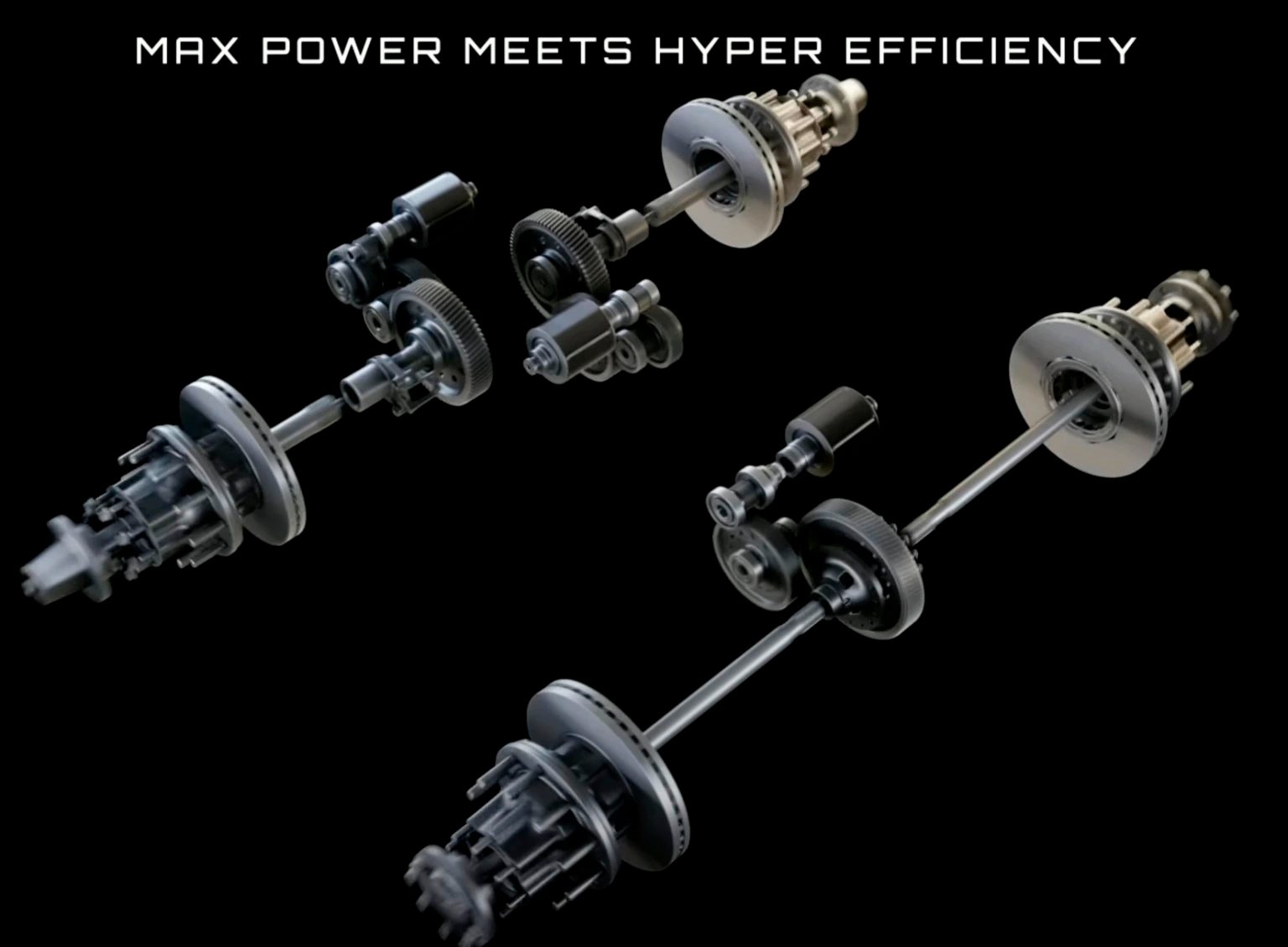
The mechanics of the Semi is identical to that used by the Model S Plaid on the rear axle, where it mounts 3 motors, one on one axis and two on the other, for acceleration.
This consumption allows Tesla to announce a saving of 74,000 dollars a year (more or less the same in euros), when compared with a similar truck with a diesel engine, which opens the possibility of reaching the break even of a 180 truck or $200K after only 2.4 or 2.7 years of use. At the same time, Elon Musk assures that the Semi is capable of traveling 1,600,000 km without breakdowns, wearing out certain elements much less, such as the brakes, due to the presence of the regeneration system, which produces electricity on board. while speed is reduced.
Semi faster than a Civic Type R
The adoption of zero emission trucks, such as this battery-powered semi-electric, is a decisive solution for the reduction of CO2, but above all of particles, which are carcinogenic and highly problematic for health. According to Tesla and considering exclusively the North American market, diesel trucks represent only 1% of the vehicles on the road. However, they are responsible for 20% of the emissions and 36% of the particles.
Tesla did not disclose the Semi’s horsepower, but did disclose that the tractor uses the same three engines as the Model S Plaid, making 1,020 hp, or about 1,034 hp. However, these three units are installed separately, the first of the two drive axles being driven by one of the engines, precisely the one in charge of moving the truck on the road and at cruising speed. When starting and accelerating with more force, the other two engines join the first, although these two units are associated with the second drive axle.

The first units of the Semi have already been delivered, and Tesla is expected to produce 100 units by the end of the year. In 2024, at cruising speed, it expects to reach 50,000 units/year
Measuring just the tractor’s acceleration capabilities, the Semi starts surprisingly fast. From 0-60 mph, approximately 0-97 km/h, the Semi consumes a mere 5 seconds, allowing it to outpace big-name sports cars like the latest Honda Civic Type R, with 330 hp, which passes the same threshold. in 5.3 seconds. Of course, pulling 37.2 tons, the speed suffers a setback, but it is still much higher than that achieved by diesel competitors, with the brand claiming 20 seconds.
Can the Semi come to Europe? Will it be competitive?
If Tesla intends to manufacture only 100 units of the most powerful Semi and with the largest battery by the end of 2022, it is also known that it promises to produce 50,000 tractors a year as early as 2024 and, if the savings that this heavy electric vehicle allows are confirmed, you will not be short of it. customers. However, there are some differences between semi-trailer truck specifications on both sides of the Atlantic, from gross weight to length to type of use.
In Europe, the trucks are shorter, which explains the absence of longer cabs, with the engine right in front, forcing vertical fronts in which the driving position ends up being located above the mechanics, with all that this implies. But this setback is mitigated by the fact that European truckers drive fewer hours a day, far from 12 for Americans. It remains to be seen if the Semi’s aerodynamic front end, which makes for a longer cab, will force the shorter trailers to compensate.
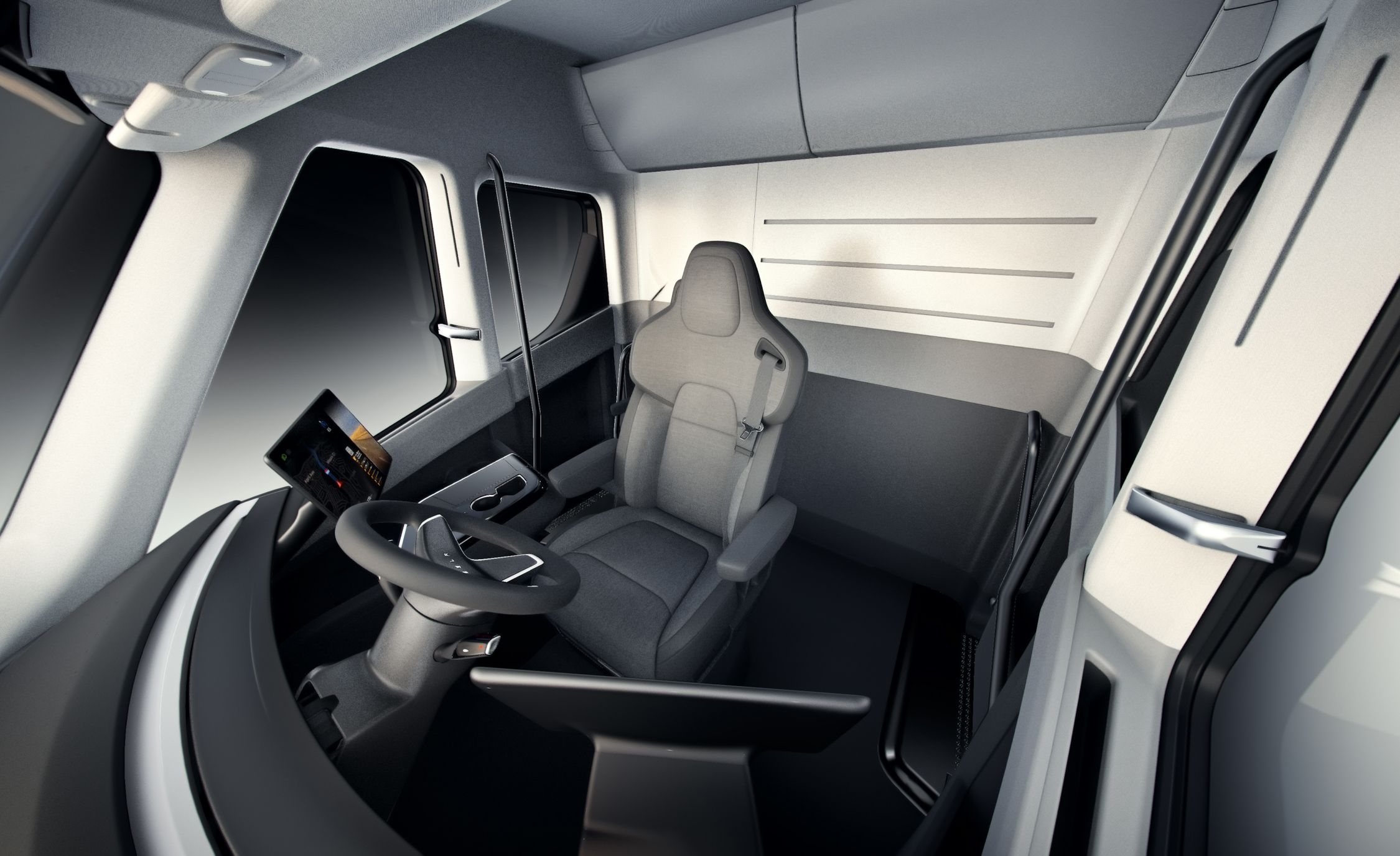
The “clean” environment in the cabin of the Tesla cars was also used in the trucks
Another important piece of information that is still unknown is the tare weight of the tractor, which will necessarily be higher than its diesel opponents. But there are mitigating factors here, too, with the Americans allowing electric trucks to weigh 2,000 pounds more (907 kg, with 82,000 instead of 80,000 pounds), while European legislators went further and offered a clearance of 2,000 kg to accommodate the accumulators. But since the distances traveled by European truckers are also shorter, with longer stop times (for a single driver), many may consider opting for the Semi with 483 km (with maximum load), for its capacity of fast charge. .
Proof of the interest that the Semi has aroused by European transport companies is confirmed by the fact that orders have already been opened in markets such as the British, Norwegian and Dutch. In the latter market, the base Semi is offered for €130,000, announcing a consumption of 475 km already by the European method, the Long Range version requiring an investment of €150,000 and the Founders Series €170,000.
Source: Observadora
